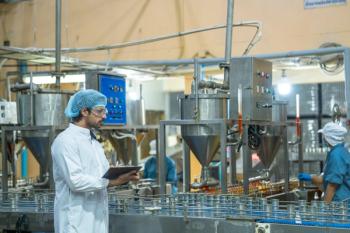
- Spectroscopy-03-01-2011
- Volume 26
- Issue 3
Market Profile: NMR Probes
One of the most critical components to the performance of any high-field nuclear magnetic resonance (NMR) system is the NMR probe. The probe is where all of the action happens within an NMR system, and they are offered in a wide variety of sizes and configurations for different applications. The aftermarket for NMR probes, alone, is quite a sizeable market, and will continue to be a major driver of the market.
One of the most critical components to the performance of any high-field nuclear magnetic resonance (NMR) system is the NMR probe. The probe is where all of the action happens within an NMR system, and they are offered in a wide variety of sizes and configurations for different applications. The aftermarket for NMR probes, alone, is quite a sizeable market, and will continue to be a major driver of the market.
NMR probes incorporate radio frequency (rf) coils that are tuned for use in certain magnetic field strengths and detect specific nuclei. They are the heart of the system and can be switched out depending on the specific nuclei to be studied or the type of sample to be analyzed. Although initial NMR system purchases will generally include one or more NMR probes, the probes are quite often purchased as aftermarket products. The probes are available in a wide range of types, including microprobes, capillary probes, cryoprobes, flow probes, and more that leverage sample size, temperature, and other sample characteristics to achieve considerably better sensitivity than standard probes. They also provide end-users the trade-offs of performance, flexibility, convenience, and cost.
Aftermarket NMR vendor probe share - 2010.
In 2010, NMR probes accounted for more than 20% of the aftermarket for the entire $930 million NMR market, which translates into about $45 million in demand. Although the cost of an individual NMR probe is a relatively small percentage of what an entire high-field NMR system may cost, at $30,000 to $100,000 each, NMR probes cost as much or more than most other research-grade scientific instruments. As a fairly easy upgrade for existing high-field NMR systems, demand for NMR probes should see strong single-digit or low double-digit annual growth in the coming years.
The foregoing data were extracted from SDi's market analysis and perspectives report entitled The Global Assessment Report, 11th Edition: The Laboratory Life Science and Analytical Instrument Industry, October 2010. For more information, contact Stuart Press, Vice President, Strategic Directions International, Inc., 6242 Westchester Parkway, Suite 100, Los Angeles, CA 90045, (310) 641-4982, fax: (310) 641-8851,
Articles in this issue
almost 15 years ago
Productsalmost 15 years ago
How to Make a Scientist Happyalmost 15 years ago
2011 Salary Survey: The Upside of Sciencealmost 15 years ago
Short Coursesalmost 15 years ago
Hybrid Mass Spectrometersalmost 15 years ago
Entering Raman's Realmalmost 15 years ago
The Spectroscopy Market Hits Its Stridealmost 15 years ago
Vol 26 No 3 Spectroscopy March 2011 Regular Issue PDFNewsletter
Get essential updates on the latest spectroscopy technologies, regulatory standards, and best practices—subscribe today to Spectroscopy.




